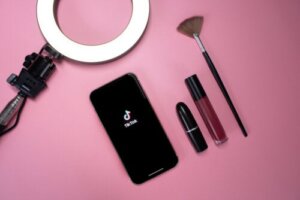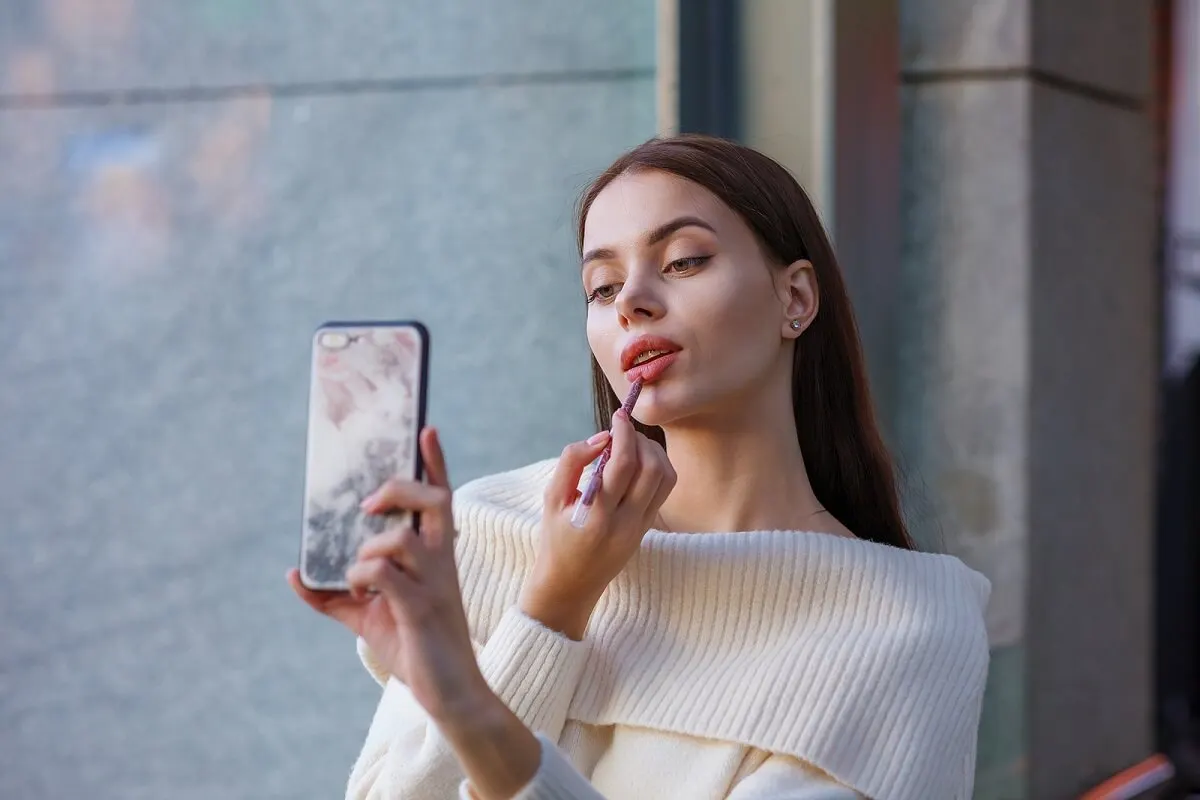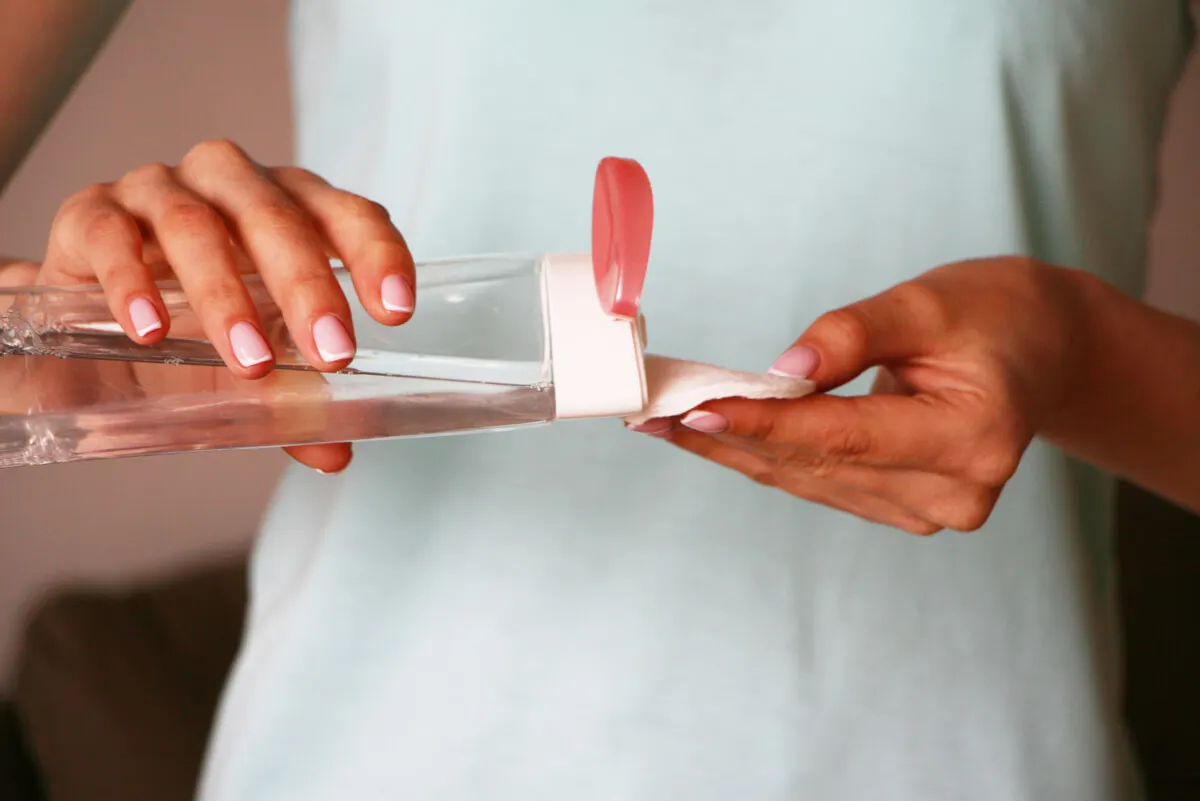One-coat Makeup: What is this Beauty Trend in TikTok All About?

Scrolling through social networks is to find a world of tips and beauty tutorials. Some are more effective and others require certain care. Recommendations often become trends because of the results they offer. This is the case of the one-coat makeup, a famous trend on TikTok.
The platform shows in short videos the way many women apply the usual cosmetics, but synthesizing steps. The technique aims to save time.
The finish looks radiant, as if you’ve gone through the routine layer by layer. When properly executed, the method doesn’t reveal skin imperfections, cracks, or wrinkles. This form of makeup is here to stay, and we’ll show you why.
What is one-coat makeup, and what are its benefits?
This type of makeup is based on giving the skin all the products it needs to groom it. But instead of doing it piecemeal, you apply the cosmetics together and then blend them out.
The process involves foundation, concealer, blush, bronzer, and even sunscreen, poured on the areas of the face where you would normally apply them separately. Eyebrows, eyes, and lips should be taken care of at a later stage.
If you’re wondering about the main benefit of using this type of grooming is, the main benefit is a smaller investment of minutes in front of the mirror than with the traditional way of applying makeup.
In addition,by knowing how to choose the substances that you will put on your face, complying with the previous preparation of the skin, and developing the technique properly, your facial skin will be radiant.

This is how you apply one-coat makeup
Applying makeup in one layer doesn’t imply new knowledge in the art. It’s more about opening your mind a bit and giving the all-in-one style a try. Below, we break down the three simple steps posed by the most popular TikTok tutorials.
Like this article? You may also like to read: 13 Makeup and Hairstyle Tricks to Save Time in the Mornings
1. Put the products on your face
The first thing you need to do is to put the makeup on your face product by product. It’s essential that you select cream products; otherwise, you won’t achieve the desired results. Makeup creams provide a natural look and perform better.
Another advantage of such substances is that most contain sunscreen. However, if you check the label and it doesn’t specify any protection factor, add the sunscreen first.
Each cosmetic goes on the spot area where you would use them separately. For example, distribute circles of foundation on the regions of the face you usually cover; then, put cream blush and concealer also go where they belong.
2. Moisten with a fixative
Once you’ve distributed the substances by drops, sprinkle a little makeup fixative in order to keep the creams moist. In general, fixatives take care of preserving the makeup in place for several hours. However, it also serves additional purposes, such as moisturizing the complexion, refreshing it, and preventing products from cracking on the face.
This is precisely what you want to do by adding fixatives to makeup in one layer. When you finish the process, if you wish, you can spray another bit of fixative, by preventing excess shine.
3. Blend
This is the last step. With a brush or a makeup sponge, you dilute the creams on the complexion.
Do this while being careful not to leave accumulated substances and making sure that the pastes do not mix. Each dotted line must retain its direction.
Thanks to their ergonomic shape, beauty blenders achieve a perfect texture and cover all corners of the face, including difficult areas such as the edges of the nose and near the tear trough. Dampen the blender a bit before blending your makeup for successful results.
If you choose to work with a brush, make sure it’s a good quality brush to ensure thorough coverage and camouflage imperfections. You’ll do better if you blend with brushes:
- Apply foundation with a foundation brush.
- Blush with a beveled brush.
- Apply bronzer with a bronzer brush.
Once the blending is complete, move on to the eyebrows, eyes and lip color.
The importance of prepping your skin before one-coat makeup
Whether in one coat or with traditional methods, the secret to good makeup lies in prepping your skin. With a conditioned dermis, the skin assimilates the products properly. Hours later, it won’t look too oily or dry.
It’s important to cleanse, moisturize and tone the face, as well as provide sun protection before moving on to cosmetics. When you moisturize beforehand, makeup adheres properly because it’s on soft skin. By toning, you also control oil and remove impurities.
If you like, you can use a primer or pre-base before applying makeup in one layer. However, if you opt for products such as BB cream products, you will gain the benefits of a primer, foundation, and concealer in a single product.

We think you may also enjoy reading this article: The Purpose of Color Correcting Makeup and How to Use It
Pay attention to the products you use
In cases of delicate skin, it’s advisable to consult a dermatologist about the best cosmetic ingredients for your skin. In fact, the Spanish Academy of Dermatology and Venereology stresses the importance of selecting suitable products according to skin type.
Faces with skin alterations can also benefit from single-layer makeup. The precaution lies in choosing the right substances.
The magazine Farmacia Profesional suggests special dermatological formulas for make-up for this type of skin, as they guarantee an optimal effect and are very easily tolerated by many different skin types.
All cited sources were thoroughly reviewed by our team to ensure their quality, reliability, currency, and validity. The bibliography of this article was considered reliable and of academic or scientific accuracy.
- Azcona Barbed L. Maquillaje dermatológico. Farmacia Profesional. Vol. 18. Núm. 3. pp. 66-71. España; 2004. https://www.elsevier.es/es-revista-farmacia-profesional-3-articulo-maquillaje-dermatologico-13059600
- Ortega Rosa. Hidratación o nutrición: ¿Qué es lo que tu piel necesita? Academia Española de Dermatología y Venereología. España; 2011. https://aedv.es/comunicacion/notas-de-prensa/hidratacion-o-nutricion-que-es-lo-que-tu-piel-necesita/
This text is provided for informational purposes only and does not replace consultation with a professional. If in doubt, consult your specialist.








